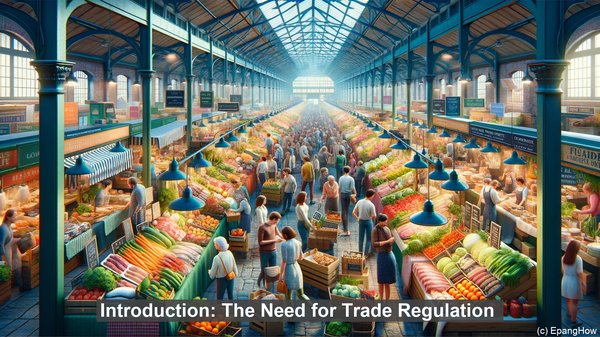Introduction: The Need for Trade Regulation
Hello everyone! In the vast landscape of international trade, it becomes imperative for governments to establish mechanisms that ensure a balance between domestic production and foreign imports. Import quotas and tariff rate quotas are two such tools that play a crucial role in this regard. While they both aim to regulate the flow of goods, there are significant differences in their implementation and impact. Let’s dive deeper!

Import Quotas: Quantitative Restrictions
An import quota, as the name suggests, is a quantitative restriction on the quantity of a specific product that can be imported within a given time frame. It sets a maximum limit, often in terms of units or weight, beyond which imports are not allowed. The primary objective of an import quota is to protect domestic industries by limiting foreign competition. By controlling the supply, it can lead to higher prices, making domestic products more competitive. However, import quotas can also lead to reduced consumer choice and potential market distortions.
Tariff Rate Quotas: Balancing Tariffs and Quotas
In contrast, a tariff rate quota combines elements of both tariffs and quotas. It sets a two-tier system: a lower tariff rate for a specified quantity of imports and a higher rate for anything beyond that. The purpose of a tariff rate quota is often twofold. Firstly, it allows for a certain level of imports at a lower tariff, promoting trade. Secondly, it provides protection to domestic industries by imposing a higher tariff on quantities that exceed the quota. This mechanism aims to strike a balance between market access and safeguarding domestic production.
Flexibility and Administration
Another key distinction lies in the flexibility and administration of these measures. Import quotas are typically more rigid and require precise monitoring. Once the quota is reached, further imports are prohibited, regardless of the circumstances. On the other hand, tariff rate quotas offer more flexibility. If the quota is filled, additional imports can still be made, but at a higher tariff rate. This flexibility allows for market adjustments based on demand and supply dynamics.
Global Trade Agreements and Quota Allocations
In the realm of international trade, various agreements, such as those under the World Trade Organization (WTO), govern the use of import quotas and tariff rate quotas. These agreements often outline the principles for quota allocation, ensuring fairness and non-discrimination among trading partners. Quota allocations can be based on historical trade patterns, market demand, or a combination of factors. The transparent and equitable distribution of quotas is crucial to maintaining a level playing field in global trade.

